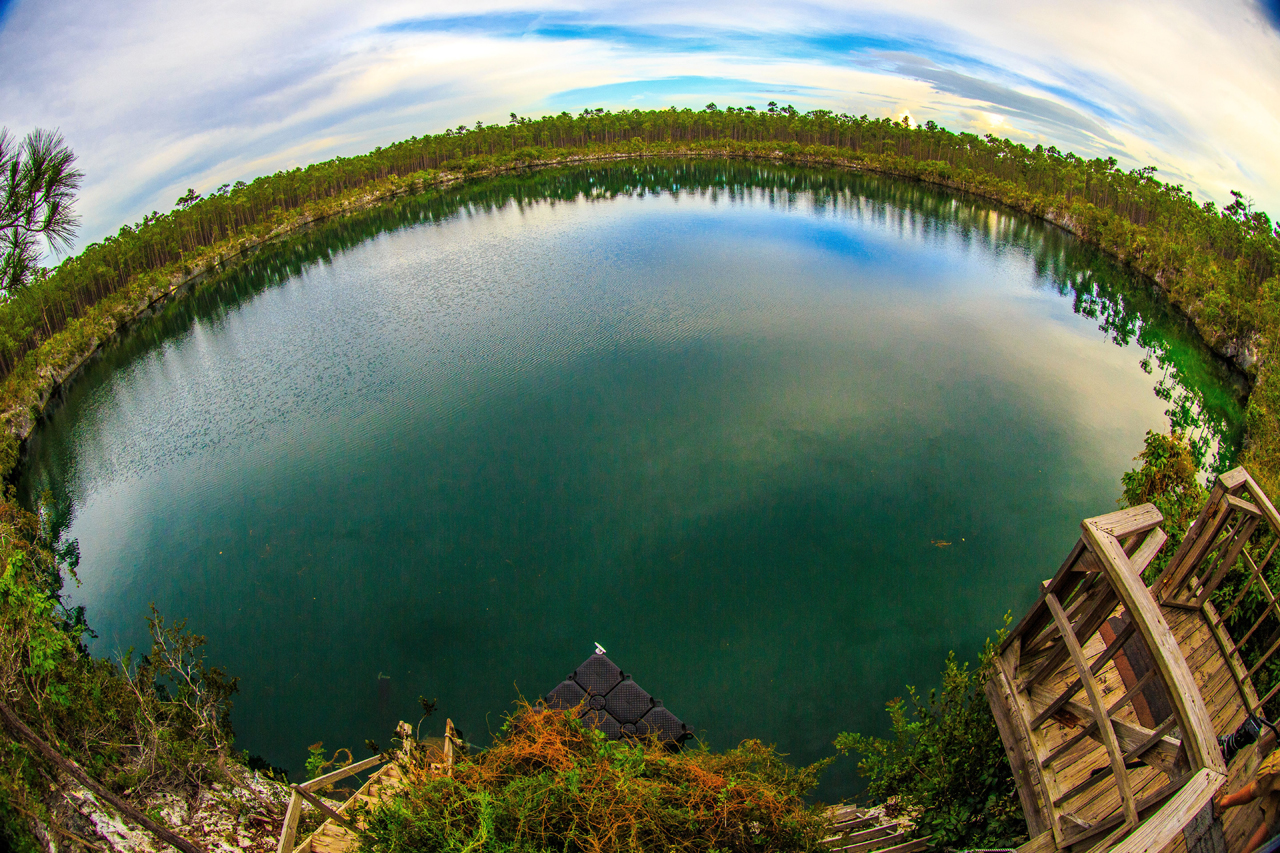
If you set out to create a destination just for divers, you'd probably start with warm, clear waters, add in plenty of shallow to mid-depth sites suitable for divers of all levels, decorated with colorful corals and an abundance of marine life, then sprinkle in some shipwrecks. After that, you could get really creative and fashion some towering underwater walls, plan some exciting big animal encounters and introduce the mysterious realms of coral grottoes, blue holes and labyrinth-like underwater caves. But why go to all that trouble when all you need do is hop a quick flight to the Bahamas, where you will find all this and more. It’s no wonder that this small nation of islands is a favorite with divers from around the world. Here are just some of the reasons why.

REEFS
The Bahamas has more coral reefs than any other diving destination in the Tropical Atlantic or Caribbean. Nearly 20,000 square miles of reefs await discovery by divers. An abundance of marine life and a diversity of ecosystems and formations provides variety and something for everyone. Shallow patch reefs create oases of life where divers can devote hours of bottom time to searching for small treasures; reef crests adorned with stands of branching elkhorn coral transition to slopes and ledges encrusted with colorful displays of sponges, hard and soft coals, creating ideal conditions for multi-level profiles; grottoes formed by the ebb and flow of currents become labyrinths that invite exploration; coral-encrusted pinnacles rise from deep water to attract passing pelagics and provide exciting encounters.

WALLS
The islands of the Bahamas and the expansive shallows that surround them are actually the tops of huge limestone plateaus that rise abruptly from the depths of the Atlantic Ocean. The edges of these plateaus form steep cliffs that drop to depths of a mile or more. Sunshine and clear waters reveal the full scope of these rampart-like formations. Diving the faces of these underwater walls is a sensation akin to flying, as divers have the unique opportunity to hang weightless, suspended above the void. And because these walls face deep water, there is always the chance that something big will come cruising in from the blue.

WRECKS
Shipwrecks add an element of intrigue to any dive, and the Bahamas has its share of sunken vessels. Some were victims of storms or human error, others were sent to the bottom intentionally to create fish havens and diving attractions. Cargo vessels are the most common members of this ghost fleet, but there's also historic shipwrecks, island sloops, ill-fated aircraft and even a Civil War-era train. Over time, many of these wrecks have acquired a patina of coral and sponge growth, and now harbor a menagerie of marine life. Because the vast majority of Bahamas shipwrecks rest in clear water at moderate depths, they are suitable for most all open water divers.

SHARKS
The Bahamas has become synonymous with shark encounters. Dive operators across the archipelago stage organized feeding dives that attract swirling clouds of reef sharks. But that's just the beginning. It's not uncommon to glimpse reef sharks on a variety of dive sites, because as their name implies, these sleek predators patrol the boundaries of coral reefs in search of their natural prey — which by the way is fish, cephalopods and crustaceans, not humans. Chance encounters with hammerhead sharks occur during wall dives, and annual gatherings of these sharks occur in the waters near Bimini. Bigger thrills await at locations such as the famed Tiger Beach, where divers can rub fins with lemon sharks, hammerheads and large tiger sharks. Even more exciting are blue water dives with species ranging from silky sharks to oceanic whitetips.

DOLPHINS
Swimming or diving with a pod of wild dolphins is a truly magical experience, and a far cry from the petting zoo-like encounter staged at captive dolphin parks. In their natural environment, dolphins are curious and playful creatures that often initiate contact with humans, and accept us as fellow aquatic mammals. Divers may have chance encounters with free-swimming dolphins at sites across the Bahamas, but there are certain areas where visits with these gregarious cetaceans are almost guaranteed. These include the waters near Freeport on Grand Bahama Island, and sand flats near Bimini and on the Little Bahama Bank.

BLUE HOLES
The islands of the Bahamas rest on a limestone substrate that is riddled with caverns and voids, much like a giant block of Swiss cheese, with some these water-filled chambers open to the surface. These pools are known as blue holes, and they can be found both on land and in surrounding waters. Some holes are the entrance to massive submerge cave systems which extend for miles underground and lure intrepid explorers. But divers don't have to venture into these dark realms to experience the magic of blue hole diving. The entrances and light-filled portion of these holes provide unique diving experiences that can be enjoyed by all.

SNORKELING
You don't need tanks to enjoy the underwater riches of the Bahamas. With just a mask, snorkel and fins, you can turn surface intervals into additional water time. All across the archipelago, reefs rise to within a few feet of the surface to create ideal conditions for snorkeling. Limestone ledges and grass beds add additional variety to the seascape, and many sites can be reached by a short swim from the beach. For something different, snorkelers can visit the famed Bimini Road, fin across the world's deepest blue hole or tour an underwater sculpture garden.
For all these reasons and more, the Bahamas remains a favorite with divers. The islands are once more welcoming travelers, and dive resorts are open for business. Contact your Caradonna agent for the latest word on dive packages and travel specials and start planning your own Bahamas diving adventure.